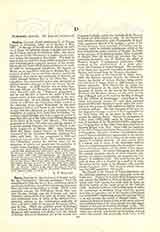

Dablon, CLAUDE, Jesuit missionary, b. at Dieppe, France, in February, 1618; d. at Quebec, May 3, 1697. At the age of twenty-one he entered the Society of Jesus, and after his course of studies and teaching in France, arrived in Canada in 1655. He was at once deputed with Chaumonot to begin a central mission among the Iroquois at Onondaga. The diary he kept of this journey and of his return to Quebec in the year following gives a graphic account of the terrifying conditions under which these journeys were made. In 1661 he accompanied Druillettes, the Apostle of Maine, on an expedition overland to Hudson Bay, the purpose of which was to establish missions among the Indians in that region and perchance to discover an outlet through Hudson Bay to the China Sea. The expedition was unsuccessful and is only chronicled as another abortive attempt to find the famous North-West Passage. In 1668 Dablon was on Lake Superior with Allouez and Marquette, forming with them what Bancroft calls the “illustrious triumvirate”, and he was the first to inform the world of the rich copper mines of that region, so valuable to the commerce of today. It was Dablon who appointed Marquette to undertake the expedition which resulted in the discovery of the Upper Mississippi; he also gave Marquette’s letters and charts to the world. In connection with this discovery he called attention to the feasibility of passing from Lake Erie to Florida “by cutting a canal through only half a league of prairie to pass from the end of the Lake of the Illinois [Michigan] to the River of St. Louis” (the Illinois). This canal, projected by Dablon 233 years ago, was the subject of a special message from the Governor of Illinois to the State Legislature in March, 1907. After founding Sault Ste. Marie, Dablon became, in 1670, Superior General of all the Canadian Missions, retaining that office until 1680. He was reappointed in 1686 and remained superior until 1693. His contributions to the “Relations” possess the highest value, his descriptions of places and people and his narration of events being singularly clear and comprehensive.
E. P. SPILLANE

